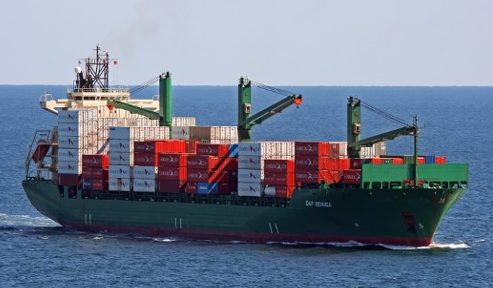Some 90,000 TEU of cellular capacity was consigned to lay-up in the past two weeks, taking redundant tonnage to its highest level since March 2014, according to liner shipping analysts Alphaliner.
Significantly, the list of 208 ships, or some 673,000 TEU, includes four containerships of 13,000 TEU or over – two operated by MSC and one each by APL and UASC.
The 13,892 TEU APL Temasek has been at anchor since 10 August, a casualty of blanked sailings and service curtailments by the G6 alliance in response to weak demand from Europe for Asian imports.
And given the depressed state of the Asia-Europe trade the short-term prospects of its reactivation, along with the 13,102 TEU MSC Margrit, UASC’s 13,100 TEU Tayma and the 13,000 TEU MSC Flavia, appear bleak.
Container lines are now reassessing winter slack season programmes – the G6 Alliance today said it would combine its two Asia-US east coast services for the period, while its Asia-US west coast CC2 service will be suspended from week 44. Maersk Line said recently it was looking at removing a further two- four east-west strings in the final quarter of the year.
In many cases the 13,000 TEU type has become a second choice vessel for the four deepsea alliances on the Asia-Europe trade as members receive more 18,000 TEU ships from shipyards. And with more ultra-large 18,000 TEU-plus ships stemmed for delivery this year, 2016 and 2017, it puts the 13,000-TEUs in danger of becoming unemployable.
Alphaliner expects more container vessels to join the unemployed fleet soon.
“Weak demand across almost all tradelanes globally has taken a heavy toll on containership demand. On top of this, a constant stream of vessel deliveries continues to add to the supply side pressure.”
It said that since the beginning of July around 480,000 TEU of new vessel capacity had been added to the world fleet.
Drewry Maritime Advisors this week reported that the number of containerships sold for scrapping this year was running at less than half the rate of 2014, with only 47 vessels demolished in the first six months of 2015 compared with 107 at the same stage the previous year.
Drewry expects scrapping to dwindle for the remainder of the year, putting the number of demolished ships at its lowest since 2011. It said this was partly due to a spurt of new intra-Asia services at the beginning of the year and the temporary switch of some Asia-US west coast services to the US east coast during strike-related disruption.
However, the main barrier to ship demolition has been the plunge in scrap values caused by a downturn in global demand for steel.
The resulting oversupply of steel has been exacerbated by scrapping subsidies granted by the Chinese government to its state-owned shipping lines, forcing the price of its domestic steel down to around half the price of a year ago and flooding the market with cheap steel.
Copyright Ships & Ports Ltd. Permission to use quotations from this article is granted subject to appropriate credit given to www.shipsandports.com.ng as the source.

